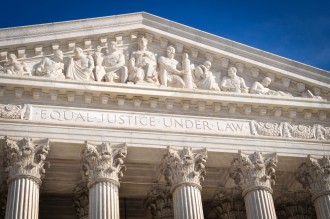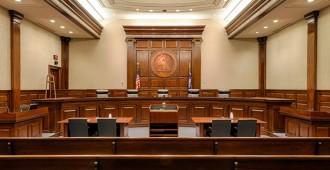
April 25, 2016
Supreme Court Hears Arguments in Cuozzo Case
We should soon find out whether the Federal Circuit will again face reversal at the hands of the Supreme Court in a patent case. Today, the Court heard oral arguments in the case of In re Cuozzo, the first IPR decision to reach the highest court. Reading the reaction of judges in oral argument can be a very dangerous game, but a few key observations can be noted:
First, while there were two issues on appeal, the issue of whether the Broadest Reasonable Interpretation claim construction standard is appropriate in IPR proceedings garnered almost all of the attention of the Court. Only Justices Ginsburg and Sotomayor briefly touched upon the second issue of whether the Board’s decision to institute can be reviewed by an appellate court.
Second, Chief Justice Roberts seemed troubled by the use of BRI in PTO proceedings. More specifically, Chief Justice Roberts was particularly concerned that the PTAB and a district court could come to different conclusions regarding the meaning of a claim limitation. Among his questions that indicated his seeming posture against BRI include: “It’s a very extraordinary animal in legal culture to have two different proceedings addressing the same question that lead to different results” and “It just seems to me that that’s a bizarre way to…decide a legal question.” Also, after the Solicitor explained how a district court and the PTAB may come to different conclusions, the Chief Justice asked: “And this is under a statute designed to make the patent system more reasonable and more expeditious in reaching judgments?” If an opinion comes out against BRI, we would expect the Chief Justice to author it.
Third, Justices Kennedy and Breyer seemed more favorable to BRI, framing the issue as the PTO taking a second look at questionable patents that should not have issued in the first place. As such, BRI might be appropriate for this second look in IPR. For example, Justice Kennedy asked, “Well, if the patent is invalid under its broadest, reasonable interpretation, doesn’t that mean the PTO should never have issued the patent in the first place, and doesn’t that give very significant meaning and structure to this process?” Relatedly, Justice Breyer commented that “what we’re trying to do with this process is to tell the Office, you’ve been doing too much too fast. Go back and let people who are hurt by this come in and get rid of those patents that shouldn’t have issued.” These questions were less clear on their intent than Chief Justice Roberts’ questions, but indicated an understanding of why BRI had been adopted.
Fourth, regarding the issue of judicial review of PTAB decisions to institute, Justice Ginsburg indicated agreement with the Federal Circuit’s reading of 35 USC 314(d), while Justice Sotomayor seemed skeptical. Justice Ginsburg asked about the purpose of that statute if not to prevent all review of the Board’s decisions. Petitioner argued that it was to preclude mandamus and prevent review of the denial to such a hearing. At the end of the hearing, Justice Sotomayor returned to this issue, and asked why Congress would tell the PTO not to institute trial except in limited circumstances “but nobody’s going to ever watch you to make sure that’s what you’re doing.” This latter exchange was more involved and left the listener with the distinct impression that Justice Sotomayor was troubled by the lack of judicial oversight of the PTO’s decisions to institute.
Lastly, seven of the eight sitting justices asked at least one question. As is typical in such arguments, Justice Thomas did not question counsel for either Petitioner or the Solicitor.



































